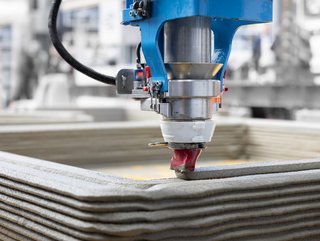Are 3D Printed Data Centres a Viable Sustainable Solution?

The Wave House, located in Heidelberg, has been hailed a success.
It stands as a testament to construction innovation as a world-first data centre made entirely from 3D printing technology. As of April 2024, it is the largest 3D printed building to date in Europe.
With this in mind, it is easy to see how 3D printing could become a fast solution for companies seeking to build data centres quickly and sustainably. In line with intensifying customer demand and a greater drain on power resources than ever before, the data centre industry is having to act fast to remain efficient and stay ahead of the digital transformation curve.
Data Centre Magazine examines these new projects and weighs up the opportunities alongside the risks.
A landmark opportunity to embellish data centre design
The Wave House was built with a single COBOD BOD2 printer, the same model that was used to build a 3D printed school in Ukraine in summer 2023.
The printer managed to print at a rate of 43 square feet per hour, harnessing a recyclable cement-like mixture, and completed the walls in just 140 hours. It demonstrates how efficient and versatile 3D printing can be in modern construction, blending functionality with appearance.
Speaking on the project’s completion, COBOD highlighted a growing trend towards making data centres more in the vicinity of the users and to therefore locate them in suburban areas and cities. As a result, data centre developers are starting to focus on the need to make data centres more visually appealing.
Additionally, it was a cost-saver, with Hans-Jörg Kraus, Managing Partner of KRAUS GRUPPE Heidelberg, commenting on the amount saved via 3D construction printing.
“I cannot tell you what it would cost if we had made the data centre conventionally,” he said. “3D construction printing made this project economically viable”.
In addition to saving time and cost, constructing 3D printed data centres could also lead to more customised solutions being created to suit a wide range of functions and situations. This is ideal for a data centre facility, given that supply and demand is swelling rapidly around the world on account of technologies such as artificial intelligence (AI).
3D printed construction has also been hailed as energy efficient, as it means that developers are using fewer resources and creating less waste. Enhanced sustainability solutions can result in greater economic success for businesses, which could be particularly useful when considering the amount of power and energy data centres currently use.
This type of construction could result in data centres being able to experiment more with the appearance and contents of their site and creating more opportunities for innovation.
Associated challenges: Does this plan have a design flaw?
Despite such forward-thinking progress, 3D printed data centres could result in some challenges, including job cuts, design inaccuracies and even a lack of reinforcement if not considered correctly.
As 3D printed buildings enter further into public consciousness, and even city centres, debates could arise over the strength of these structures and how much they can contain.
Speaking in a LinkedIn post, General Manager Cloud at Cyberlink AG, Maximilian Wellenhofer, comments on how data centres would need to incorporate reinforcement techniques to address these potential issues.
“These challenges notwithstanding, the project in Heidelberg – and the broader push towards 3D-printed structures – opens up a dialogue about the future of construction in high-risk areas, including those prone to earthquakes,” he highlights. “The industry must address structural integrity and resilience against natural disasters, ensuring these innovative structures can withstand such events without compromising safety or functionality.”
He adds: “This approach not only highlights the potential for more efficient building methods but also prompts a significant question: can the architectural design of 3D-printed structures be optimised for natural cooling processes to reduce power consumption for cooling?”
******
Make sure you check out the latest edition of Data Centre Magazine and also sign up to our global conference series - Tech & AI LIVE 2024
******
Data Centre Magazine is a BizClik brand






